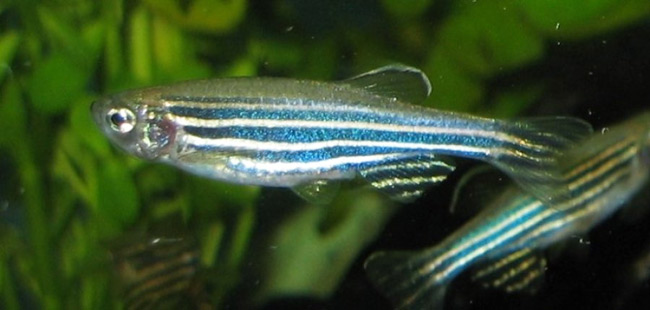
The scales of the zebrafish are very suitable for identifying potential new drugs for treating bone diseases. This is good news because it means fewer mice and rats will be needed for that work. What’s more, zebrafish are not killed when the scales are removed; they simply grow back. On 13 March, medical biologist Erik de Vrieze will receive his doctorate from Radboud University Nijmegen for carrying out this research.
How does one come up with the idea of studying zebrafish scales?
Well, if you’re interested in bone formation and degradation, the zebrafish is an interesting ‘animal model’, as scientists would say. Calcium metabolism in the zebrafish — Radboud University biologists have been studying fish for some time — shows many similarities with that of humans. Another advantage is that the scales contain cells that build up bone and also cells that break it down. Erik de Vrieze: ‘When culturing cells, it is normally difficult to obtain both of these cell populations in one test situation. In bone diseases such as osteoporosis, the balance between build up and breakdown is particularly important.’
Inefficient testing
De Vrieze wanted to know if zebrafish scales could be used to test potential drugs for treating bone diseases. At present there’s room for improvement in that area. De Vrieze: ‘The first stage of testing drug candidates is a rough-and-ready process. Millions of substances undergo biologically limited tests, concentrating on things like: does this substance bind to X? How does it react to Y? This gives you a first impression of whether a substance could be interesting for drug development. The only drawback is that when testing is subsequently done on rats or mice, many substances are found to be unsuitable.’
Zebrafish as ‘sieve’
De Vrieze’s research has demonstrated that zebrafish scales can be used for an ‘interim test phase’. The scale cells behave almost exactly like bone cells in many processes, including the response to glucocorticoids. These are inflammation inhibitors which can cause osteoporosis in humans and, it turned out, in the scales as well. Zebrafish scales could function as a ‘sieve’, thus reducing the number of drug candidates that have to be tested on rats and mice.
Light-emitting fish
However, to make the scales truly interesting for the pharmaceutical industry, De Vrieze had to do something extra: he developed a line of zebrafish in which bone-forming activity in the scales was easier to measure. He added a gene to this ‘new’ zebrafish, causing luciferase (a light-emitting substance, well-known in fireflies) to be made as soon as a particular bone-forming protein (osterix) is manufactured. ‘You might think we’ve created light-emitting zebrafish but, to be honest, there’s nothing to see. We can measure the luciferase in the scales only after activating it with another substance.’
Pharmaceutical industry
Initial contacts with the pharmaceutical industry have now been made. De Vrieze would have preferred this to happen earlier: ‘We were able to test only a limited number of substances because we didn’t have access to everything. I would have liked to know about more of the substances the pharmaceutical industry is working on the moment. Then I could have seen whether it was possible to identify them with the scales.’
The study done by Radboud University Nijmegen.